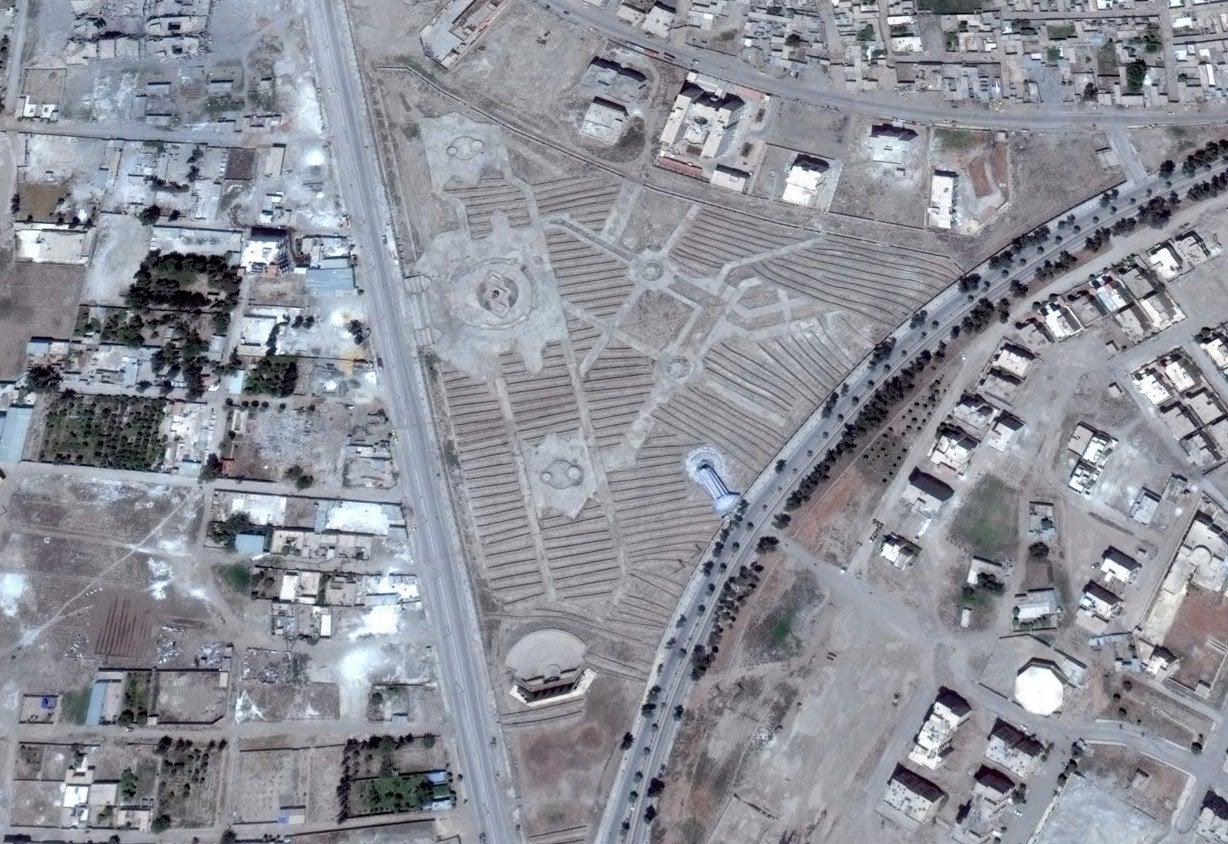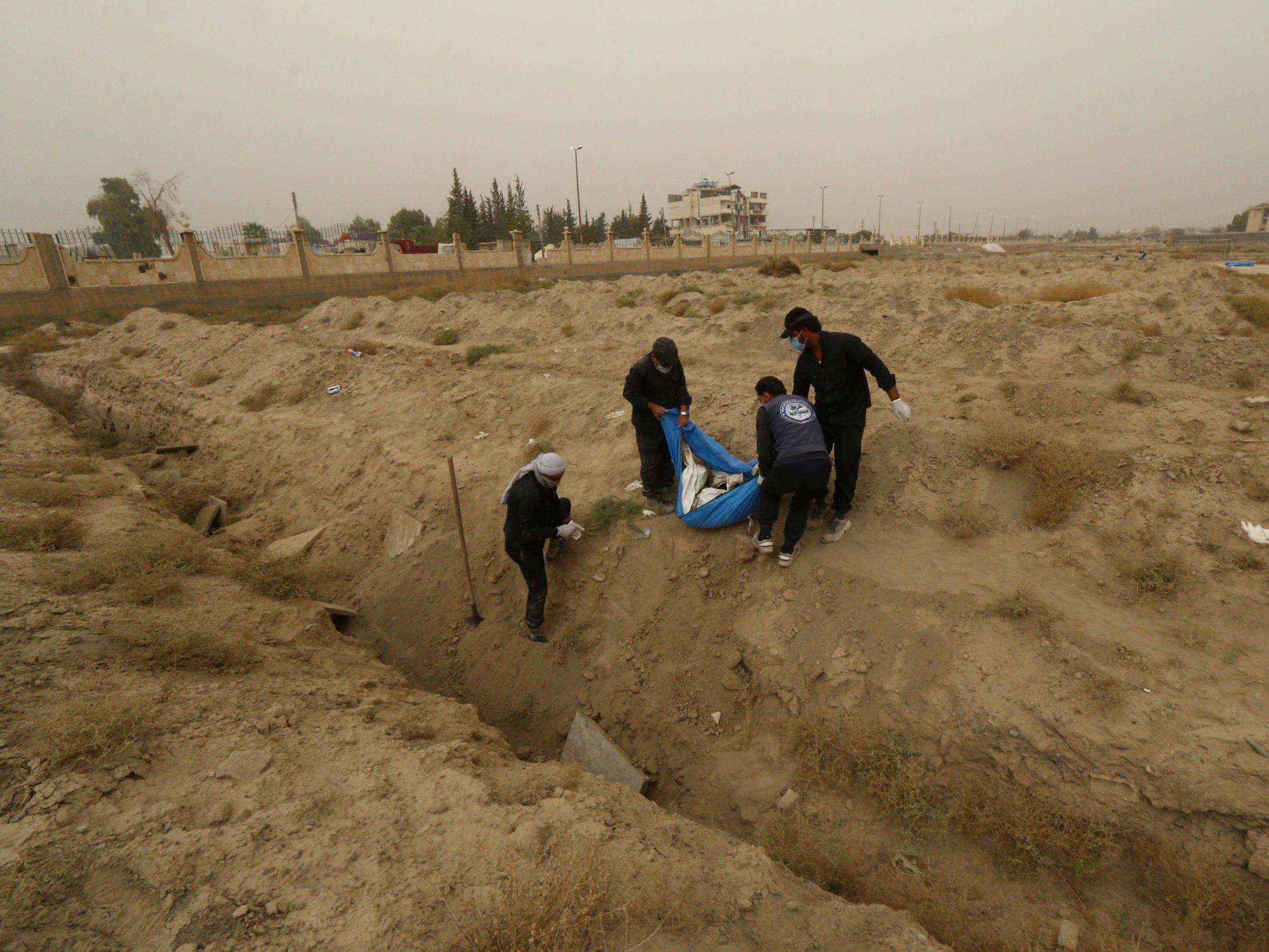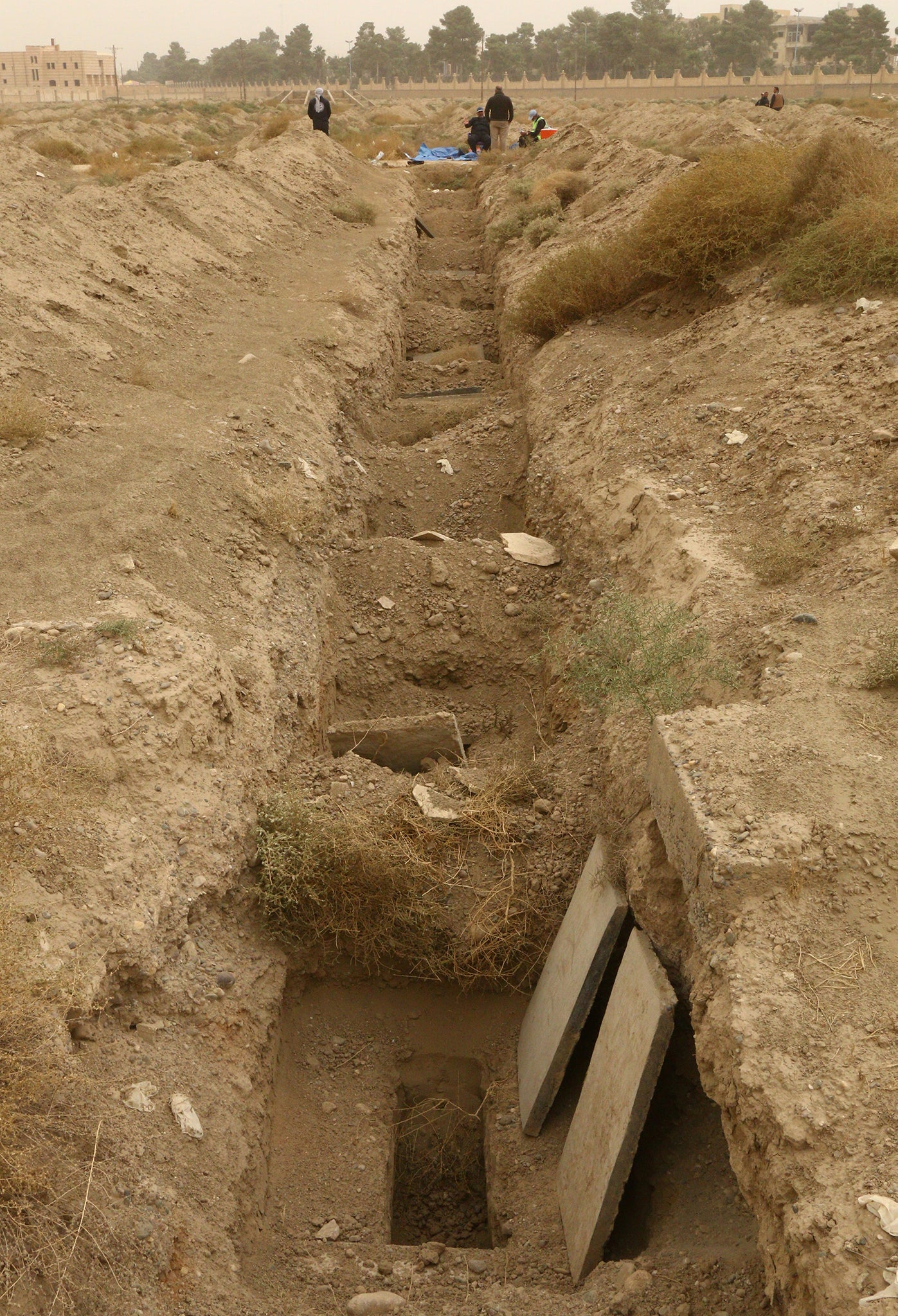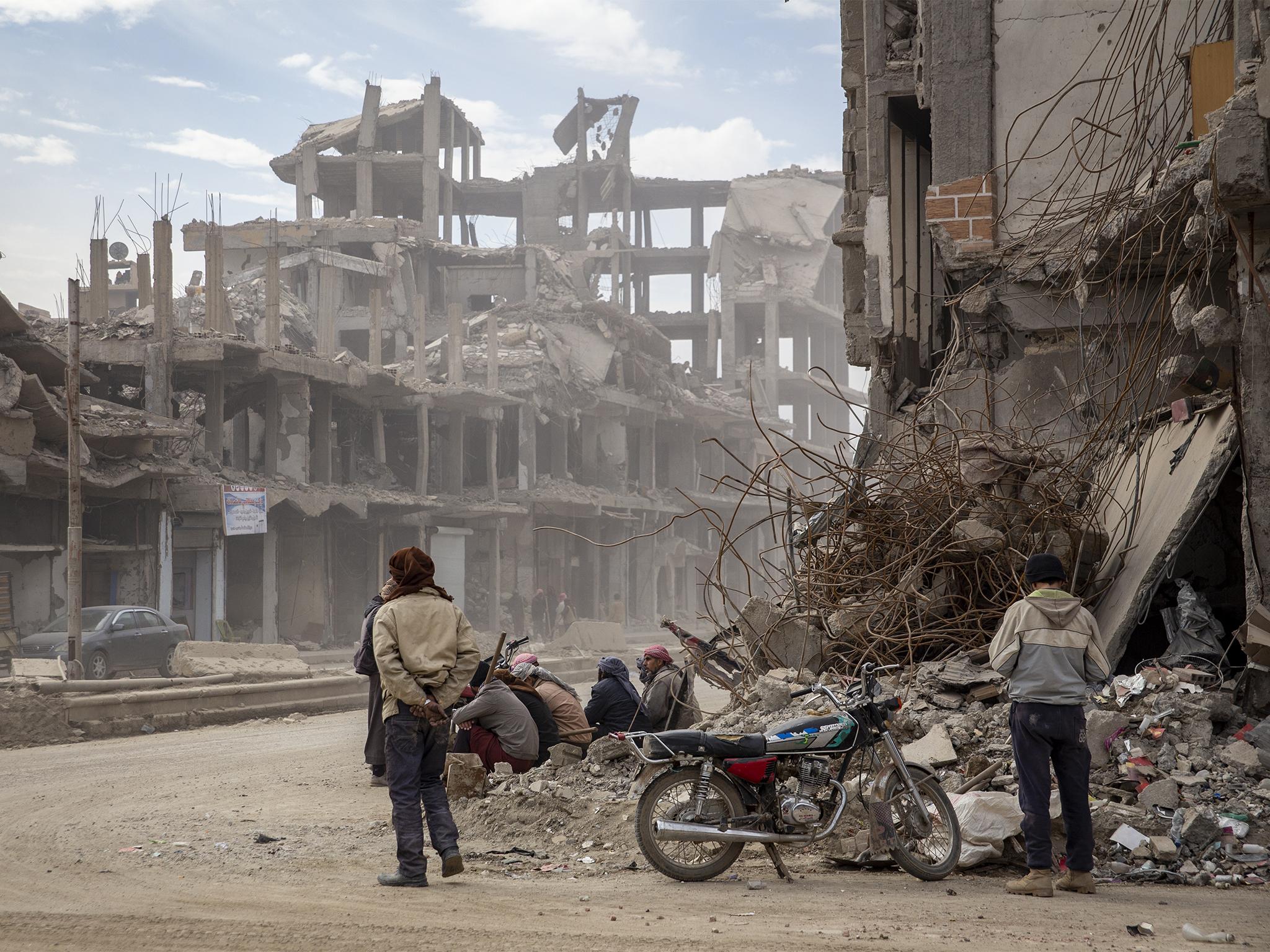Raqqa after Isis: Mass grave reveals horror of city’s final battle
In the second part of a series from Syria, visits the site of the largest mass grave in Raqqa, where 80 per cent of those buried are civilians

The gravediggers lift the shrouded body delicately from the trench, just as they have done hundreds of times before. The routine is familiar by now, and yet a sombre mood falls over them as they pull back the cloth.
“You can tell the fighters by their clothes,” says forensic assistant Abd Arawf Al Ahmed, breaking the silence. “This is not a fighter.”
The examination doesn’t last long. In under two minutes, Ahmed is able to determine that the deceased was a woman, in her late 20s, and that she was likely brought here from the hospital. The cause of death is unknown.
Under normal circumstances, an exhumation would be the beginning of an investigation, rather than the end. But here in Panorama Park, the largest mass grave in Raqqa, there are too many bodies, and too little time.
Ahmed and his team of first responders are responsible for collecting Raqqa’s dead, many of whom are still hidden beneath the rubble of destroyed buildings or buried in mass graves. At least nine such sites have been discovered in the city since Kurdish-led forces liberated it from Isis in October 2017 – and they expect to find more.
Much about these graves remains a mystery, but Panorama Park has a story to tell. All of those buried here died in the final fight for Raqqa – a devastating four month battle that levelled the city. One year on, this once peaceful place is revealing new horrors from the last days of the caliphate’s ‘capital’.

The graves in Panorama have transformed the park into a macabre monument. Raised mounds of dirt stretch off into the distance in neat lines, following the direction of the trenches dug beneath. Seen from above, they appear to be part of the intricate pattern of pathways that criss-cross from one side to the other.
Satellite images reveal Isis first began digging the giant trenches in February 2017, when they were losing ground in the Raqqa countryside to the Kurdish-led Syrian Democratic Forces. A number of other gravesites had been pre-prepared in this way, but none quite on this scale.
Earlier we exhumed three babies, one who is six months, one who is two days, and one who is two years old
But by June, the city was completely surrounded. In the months that followed, the US-led coalition unleashed a devastating bombing campaign that killed scores of civilians. Isis fighters used civilians as human shields. Many died in the crossfire.
“These people were trapped,” says Ahmed, as he watches his team dig. “Isis prevented anyone from getting out of the city, and the coalition bombed everything. They had no choice but to die here.”
As the casualties piled up, and the city was overrun by fighting, residents had nowhere to bury their dead. They used any patch of ground they could find. Panorama Park became the main burial place in Raqqa for civilians and fighters alike.
Officials estimate that some 1,500 people are buried in here. Of the bodies exhumed to date, they say the overwhelming majority, some 80 per cent, have been civilians – most of them women and children – and around 20 per cent Isis fighters.
By noon, Ahmed’s team have pulled five bodies from the ground. Each one reveals another tragic story of those final months.
“Earlier we exhumed three babies, one who is six months, one who is two days, and one who is two years old,” says Ahmed. “These are babies who died from explosions, planes and shelling.”
He says they have found a number of foetuses buried here, some of which he suspects were the result of miscarriages caused by the bombardment of the city.
“This is treatment that the people of Raqqa were subjected to, which no other has suffered,” he says.
Buried alongside the innocents are the fighters that brought so much misery to the city. In this grave, a number of foreign Isis members have been found, including a number of Chechens.
The death and destruction caused by the bombardment of Raqqa, laid bare here in Panorama, has left a bitter legacy. Most in the city were glad to be free of Isis, but there is anger at the high cost they had to pay for that freedom.
The US, which carried out around 90 per cent of the air strikes on the city, has repeatedly defended the way the campaign was fought. General Stephen Townsend, the former head of the coalition to defeat Isis, said “there was a sense of urgency” to capture the city because the group was using it as a base to plan attacks on the west. Civilian casualties were exacerbated by the use of human shields by Isis.
The US has admitted responsibility for the deaths of around 100 civilians in Raqqa. But those figures have been called into question by independent observers.
Airwars, a UK-based independent investigative group, says more than 1,500 civilians were killed in coalition air and artillery attacks in the final battle for Raqqa, between June and October 2017.
In a report released last month, Amnesty International said the US-led coalition’s “ongoing failure to admit to, let alone adequately investigate, the shocking scale of civilian deaths and destruction it caused in Raqqa is a slap in the face for survivors trying to rebuild their lives and their city.”
Ahmed says first responders have found between 4,000 to 5,000 bodies across the city, both in mass graves and under the rubble – most of them the victims of airstrikes.

Panorama Park is a wide open, triangular shaped space not far from the Euphrates river, on the southwestern edge of the city. A large sculpture of a flower greets visitors near the entrance. Before the war, a giant colourful mural of the former Syrian president Hafez al-Assad watched over it. When Isis took over, it was painted black.
Near the centre of the park today, a small white tent serves as an office for the gravediggers. Many of them remember coming here in better days, when it was full of families escaping the noise of the city.
Most of them don’t have specialised training for the job they do. Even Ahmed, the forensic assistant, only performs only a cursory examination of the bodies. He notes the clothes worn, a rough age, if they have any documents (they rarely do), and any distinguishing marks. After that, victims are taken to be buried in a cemetery outside of the city.
Their work is grim, necessary, and a fitting metaphor for the state of Raqqa today. Fully investigating the city’s mass graves might have been a chance for the families of those killed to find closure, or even go some way towards accountability. But without the right training or resources, they are merely burying the past.
Without the right technical assistance, these exhumations may not provide families with the answers they have been waiting for and could damage or destroy evidence crucial to future justice efforts
Priyanka Motaparthy, senior researcher at Human Rights Watch, observed the exhumation of one mass grave in Raqqa earlier this summer.
“These local teams are doing the best they can, but there are basic forensic protocols that aren’t being followed. It takes a certain capacity to do that,” she tells The Independent.
Motaparthy watched first responders as they pulled bodies from another mass grave, in the Al-Rashid stadium, just two miles from Panorama. The stadium was converted into a jail by Isis when it took control here in 2014. Thousands disappeared into prisons like these, never to be heard from again.
Motaparthy says that the chance to discover their fate is being lost.
“There are dozens of families in this area whose loved ones are missing, and these graves are a chance for them to understand what happened to their relatives. But if the bodies aren’t properly registered, they lose that opportunity.
“Without the right technical assistance, these exhumations may not provide families with the answers they have been waiting for and could damage or destroy evidence crucial to future justice efforts.”

Assistance is something nearly every official body in Raqqa desperately needs. The Raqqa Civil Council, set up by the Syrian Democratic Forces to administer the city after Isis, has repeatedly called for more support from the international community to rebuild. But the US and others have tied support for reconstruction to winning concessions from the government of President Bashar al-Assad.
Abdullah Aryan, an official with the council’s Reconstruction Committee, which oversees the management of mass graves, tells The Independent that most of the victims being discovered have now been buried for so long that they are little more than bones, which requires equipment for testing they don’t have.
“We do everything by hand, we don’t have any specific equipment for these cases,” he says. “We don’t have a DNA lab and most of the bodies don’t have documents with them.”
While first responders continue to search for clues in Panorama Park, Ayran is already anticipating new discoveries. More than 200 mass graves have been unearthed in Iraq, possibly containing 12,000 Isis victims. There is every reason to expect that more will be found in Syria.
“I think it is not the last mass grave,” Ayran says.
Read the first part in the Raqqa after Isis series here: Meet the 30-year-old woman rebuilding the former capital of the ‘caliphate’
Join our commenting forum
Join thought-provoking conversations, follow other Independent readers and see their replies
Comments